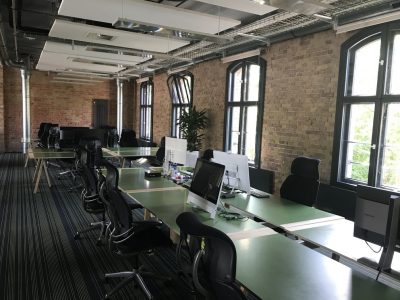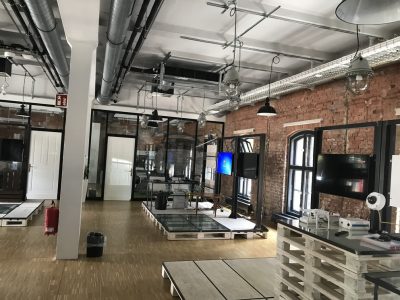openBerlin – welcome to the digital, smart building
Issue 02-2017:
read all articles online
read as pdf
While innovation has always been important, in today’s competition-oriented and constantly changing markets, it has become essential to a company’s success. openBerlin is part of a network of nine Cisco innovation centers worldwide and offers an open platform for developing new business and technology solutions in order to open up opportunities and markets with the aid of rapid prototyping. André Diener, the technical director of the innovation center, deliberately chose to use EnOcean technology when equipping the facility.

Mr. Diener, could you briefly explain what openBerlin is exactly?
In the openBerlin innovation center, we work on innovations with a vast ecosystem of partners and thereby create new business and technology solutions. We help local and global organizations improve their business results by using intelligent data preparation and digitalization. As an innovation center and workplace for customers, partners, startups, universities and open developer communities, openBerlin has innovative meeting rooms, software and hardware development rooms and demonstration areas where new ideas, concepts and technologies can be created.
What arguments spoke in favor of choosing an EnOcean-based solution when equipping the innovation center?
With openBerlin, we wanted to provide an innovative building that is simultaneously energy- and cost-efficient. Since our efforts involved upgrading a building that had an open brick design, we couldn’t consider a solution that required wiring. Therefore, we knew from the very beginning that the solution had to be wireless. We found it especially important for the sensors to be self-powered in order to ensure maintenance-free and reliable operation. Easy installation was another requirement. In an
innovative building, one also never knows whether the rooms will be used in the same way several weeks from now. This means that it had to be possible to flexibly position the products. The EnOcean-based products met all these requirements. The energy and cost savings that also resulted were another determining factor.
What products and solutions are you using?
Implementing the openBerlin project involved reconstructing the building, installing heating and air conditioning systems as well as new lighting technology. The retrofit of EnOcean-based window sensors and motion detectors now enables us to automate the light control and monitor the windows. With the aid of ceiling-mounted presence detectors, we can generate additional information about the room occupancy and use it to optimize the capacity utilization of the existing workstations.
All collected data is transmitted in real time to an interactive dashboard for visualization and controlling the building automation system. openBerlin users can access the dashboard from websites or smart phones and thus control the building. The combination with the Smart EnOcean Gateway from Digital Concepts ensures communication between the EnOcean wireless standard and the IP protocol, the latter of which forms the basis for integrating the data into standardized, open platforms. This facilitates a completely interoperable network, in which the collected data can be used to intelligently control different devices.
We use our own Meraki cloud-based network solution in the openBerlin innovation center. We also employ a face recognition solution from Stonelock for access control. And we use our own Cisco Mobile Experience WLAN solution for the precise positions of people within the building. This provides us with exact information on WLAN usage, user statistics and location heat maps in openBerlin.

What positive changes in your operating procedures have arisen from your use of the new solution?
We were able to reduce our energy and maintenance costs through the use of the EnOcean technology. Our flexibility in the use of space has also improved. The rulebased building control system and integrated remote control function also increase comfort, as users can individually set the lighting at their workstations according to their specific needs.
Mr. Diener, thank you very much for talking to us.
New articles in Smart Spaces
Top articles





